#Enrique Lizalde
Explore tagged Tumblr posts
Text

Enrique Lizalde-Silvia Pinal "Estrategia matrimonial" 1966, de Alberto Gout.
11 notes
·
View notes
Text
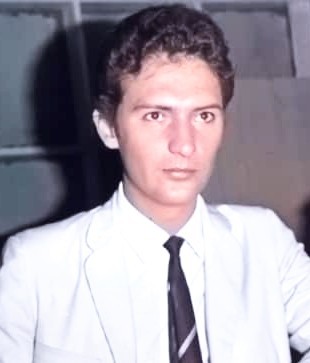



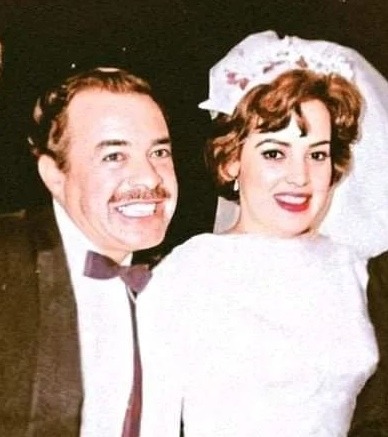
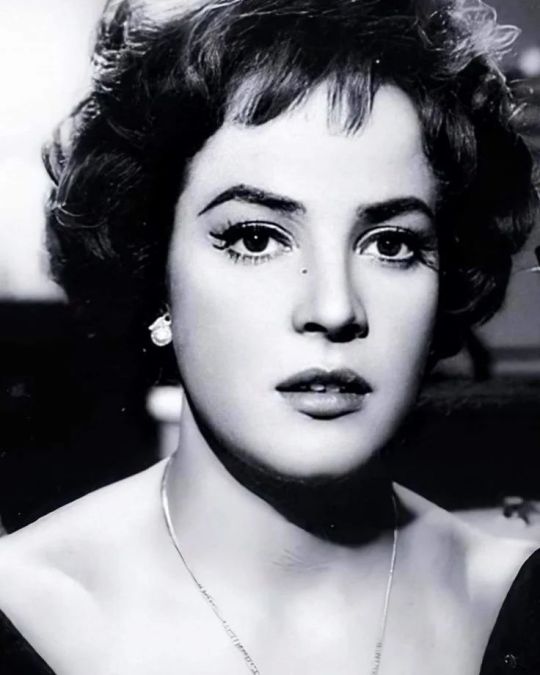


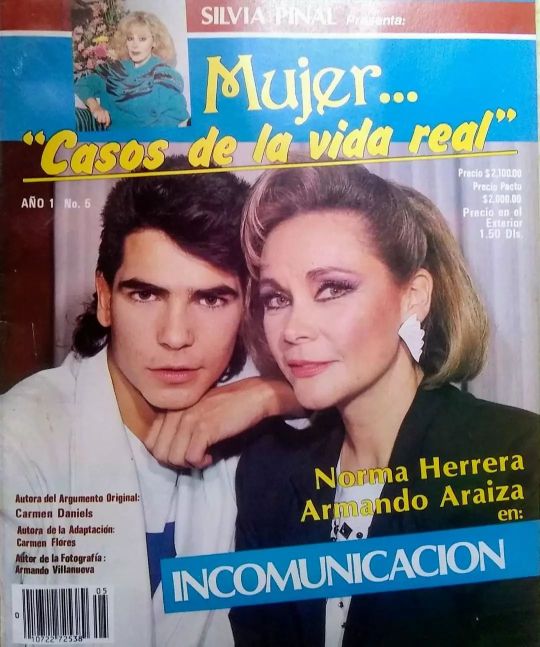

#artistaslatinos16#artistas mexicanos#artelatino7#enrique lizalde#yolanda varela#maria rojo#norma herrera#cantinflas
3 notes
·
View notes
Text
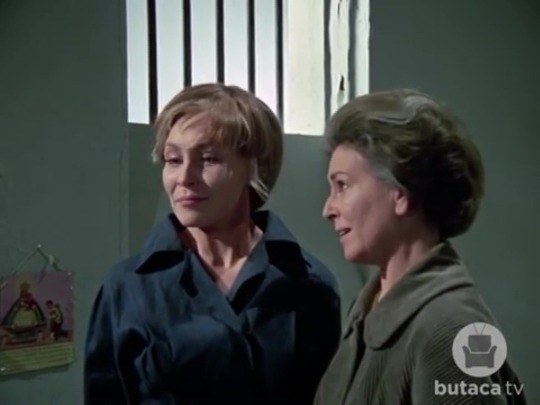

rosario, rogelio a. gonzález 1971
#rosario#rogelio a. gonzález#1971#marga lópez#enrique lizalde#zulma faiad#material#jva#kinski geisel#pressefreiheit#meinungsfreiheit#banksy#das schwarze schaf#about photography
0 notes
Text

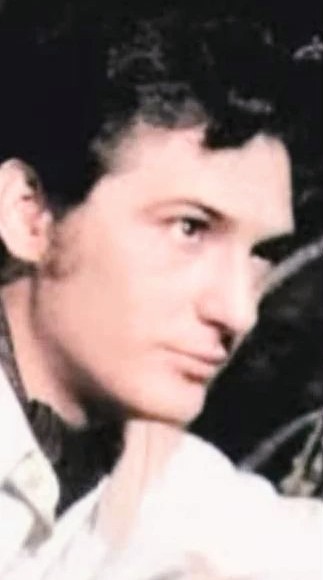
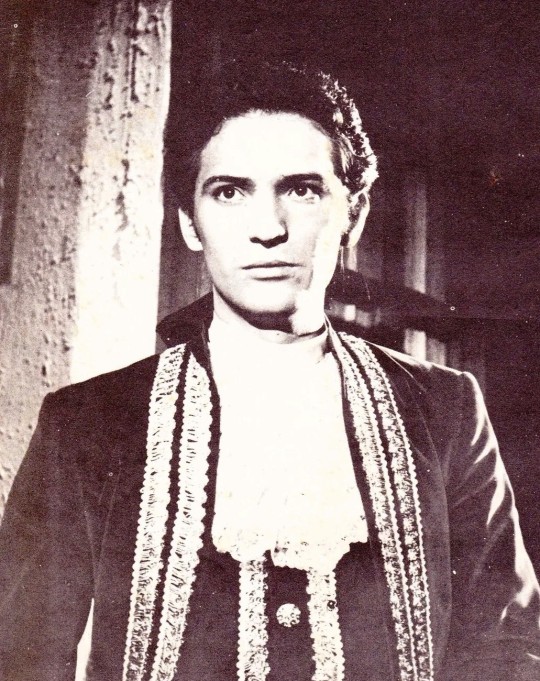


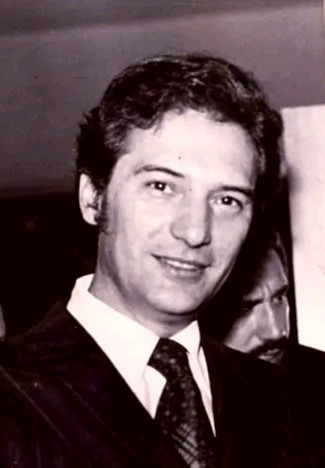
1 note
·
View note
Text
youtube
CHISPITA - ABERTURA Chispita é uma telenovela mexicana infantil produzida por Valentín Pimstein, e foi exibida no Las Estrellas entre 15 de novembro de 1982 e 19 de agosto de 1983, em 200 capítulos, sucedendo Déjame vivir e antecedendo La fiera. A história é uma adaptação da telenovela argentina Andrea Celeste, obra original de Abel Santa Cruz e produzida em 1979. Foi protagonizada por Lucero, além das participações estrelares de Angélica Aragón e Enrique Lizalde e antagonizada por Renata Flores. Foi exibida pelo SBT pela primeira vez entre 12 de março a 3 de novembro de 1984, em 172 capítulos, subistituindo O Direito de Nascer e sendo substituída por Jerônimo, às 18h00. Foi reprisada em 1985, entre 4 de agosto e 23 de novembro de 1992. E mais uma vez entre 1 de julho e 27 de setembro de 1996, ao meio dia, substituindo Carrossel das Américas e sendo substituída por Vovô e eu. Também foi exibida pela CNT entre 2 de junho e 31 de outubro de 1997. via YouTube https://www.youtube.com/watch?v=p_5wCVEFTXc
0 notes
Text
#Arribaeltelon
Obra: "Madre Solo Hay Una" Fecha y Hora: Jueves a las 8:00 PM Lugar: Teatro Enrique Lizalde
Tenemos 10 pases con descuento disponibles. El costo de impresión del boleto para los beneficiados ganadores es de $80.
0 notes
Photo

Nunca es demasiado tarde para decirle al amor todo lo que provoca en tu corazón. 2da obra del 2023 *Dile al amor* #teatro🎭 #obra #obradeteatro #musical #baile #amor #love #escenografia #likeme #fyp #friends (en Teatro Enrique Lizalde) https://www.instagram.com/p/CpqvG6FrJWY/?igshid=NGJjMDIxMWI=
0 notes
Photo

The Scapular (1968, Mexico)
Also known by its original title, El escapulario, Servando González’s The Scapular is one of the finest examples of classic Mexican horror filmmaking. For those versed in modern horror, adjust your expectations. Atmospheric from its opening moments and making full use of its sparse environments, this movie does not depend on bloody set pieces or instant frights. Instead, The Scapular prefers gradual storytelling through flashbacks, all while it refuses to answer how any of its unlikely events might be possible. The screenplay by González, Jorge Durán Chávez, and Rafael García Travesi navigates questions of Catholic faith, political preferences during the Mexican Revolution (1910-1920), and love amid more grotesque moments one comes to expect in a horror film. Those horror elements – of spirits staying true to their word – are most prominent at the very beginning and second half of the film, and absent for almost all the first half. A major contribution from cinematographer Gabriel Figueroa – regarded by some to be the greatest Mexican cinematographer of all time – and his Hollywood-influenced lighting elevates the movie, bathing the screen in intoxicating black-and-white.
Something during or after the Mexican Revolution, Father Andrés (Enrique Aguilar) pulls into town on a late train, following an unseen individual to the residence of Doña María (Ofelia Guilmáin). While the padre and the unseen person – the camera nods “yes” in response to a few questions from the padre – amble through town, two bandits follow close behind. They have been stalking Father Andrés since he disembarked the train, hoping to pilfer his gold watch. They decide to wait until after he administers his sacraments to Doña María. Inside, Doña María – whom the padre knows almost nothing about – hands the padre a scapular (a primarily Catholic garment of piety), which she claims to have saved the lives of her two eldest sons. El escapulario, for most of its remaining runtime, flashes back to the stories of those two sons, Julián (Carlos Cardán) and Pedro (Enrique Lizalde).
Once a soldier for the Mexican government, Julián defects and joins the rebels in their fight against Porfirio Díaz’s dictatorship. For Pedro, he is working for his uncle at a saddle shop, but has his eyes on the village chief’s niece, Rosario (Alicia Bonet) – in his attraction, class tensions come to a head.
Servando González, Jorge Durán Chávez, and Rafael García Travesi’s screenplay does the best it can with an unwieldy story structure. Though El escapulario is a breezy eighty-five minutes, the flashbacks for Julián and Pedro both feel slightly too long while the audience is itching for a macabre payoff. Nevertheless, the screenplay juggles numerous themes without ever feeling forced. Discussion about the Mexican Revolution is mostly confined to Julián’s story. At times, the dialectic between Mexico’s then-contemporary military dictatorship and peasant-led revolution sounds too much like propaganda. But given that Doña María is responsible for imparting this story to the padre (and, by extension, the audience), one can expect some over-romanticizing the revolutionary cause. El escapulario firmly sympathizes with the revolutionaries – following how popular historical memory is in Mexico today. In Julián’s story, this ideological conflict takes place entirely within a military and revolutionary backdrop. Civilian perspectives are not present for this part, but there are mentions of a groundswell of support for the revolutionaries. Acknowledging these partisan emotions and political interpretations, viewers who have not seen the entirety of The Scapular should accept the bare facts of Doña María’s recounting of Julián and Pedro’s stories as truthful – even though she was not present for any of the moments she describes. To say more risks spoiling the entire film.
Pedro’s chapter of El escapulario is less explicitly political than his elder brother’s, but related tensions persist. Pedro, firmly in the working class but not poor, inspires the wrath of Don Augustín (Jorge Russek, who played Major Zamorra in 1969’s The Wild Bunch) by even looking longingly at his niece, Rosario. Don Augustín is no moustache-twirling villain, but his disregard for his fellow villagers and overinflated opinion of himself make clear his sympathies for the Porfiristas against the revolutionaries and peasantry. Director Servando González keeps the focus on the brothers in both flashbacks, rooting the film through the perceptions of those with little to benefit under the Porfirio Díaz regime. It is in Pedro’s story that the first bits of horror filmmaking appear since the film’s opening minutes. Occult, perhaps darkly religious, forces influence developments as Pedro disregards Don Augustín’s advice to avert his wandering glance from his niece. These moments hinge on the scapular, as Don Augustín enlists others to intimidate – by force, if necessary – Pedro and Rosario from even thinking about each other.
In those moments, cinematographer Gabriel Figueroa’s work truly shines. Figueroa, who, in 1935, lived in the United States for a year to formally study his craft under Gregg Toland (1940’s The Grapes of Wrath, 1941’s Citizen Kane), certainly learned much from the man he considered his teacher. Even after returning home to Mexico in 1936, Figueroa continued to analyze Toland’s work closely – from chiaroscuro techniques to deep focus cinematography. But even before leaving for America, Figueroa’s work as a still photographer exemplified someone with a keen eye for composition. And long after his time under Toland, Figueroa would shadow some of Hollywood’s best cinematographers on his trips to Southern California; Toland himself, when visiting Mexico, would make suggestions and critique his old student’s work. Figueroa also enjoyed the privilege of friendships with Mexican artists Diego Rivera (who counseled him on how to use color – a story for another time, as El escapulario is a black-and-white film) and David Alfaro Siqueiros. Siqueiros provided Figueroa advice on escorzo or, in English, foreshortening. Foreshortening is an artistic technique on perspective that allows an artist to portray something that appears to be closer or shallower than it is.
Foreshortening becomes crucial in El escapulario’s second half, as the narrative descends in into the grisly and ghostly. A nocturnal horse ride during Pedro’s chapter stumbles upon a horrific sight, aided by foreshortening, sharp but still-horizontal angles, and quick cuts as the horse begins to buck wildly – spooked by unnatural forces that animals in movies just seem to pick up on faster than any human. The lighting’s influence on this scene’s mood is impossible to replicate if this was a color film. El escapulario’s final two scenes – by chicanery, candlelight, and cobwebs – are the culmination of what Gabriel Figueroa picked up from the likes of Toland and Siqueiros. Even when traversing an empty street at the witching hour or in a desolate room, there always seems to be a presence watching and waiting. Early morning mist appears to curl around the characters, like wispy hands. I am uncertain how this effect was achieved, and it might be seen as campy in most other contexts. Here, it is as if unknown forces are toying with the characters’ souls. It is spectacular camerawork from Figueroa, in his only collaboration with Servando González in a career spanning more than two hundred movies.
Viewers could also approach The Scapular from a religious context. The lines between life and death, faith and the absence of it, are tenuous. Catholicism and Catholic metaphysics are present from the prologue, impacting the dialogue and behaviors of all of the characters from their moments of introduction. Those more familiar with Catholicism in Mexico – the 2020 Mexican census says 77.7% of Mexicans practiced Roman Catholicism – can hopefully make more educated and nuanced contributions to religiously-inflected analyses of The Scapular than I possibly could.
The Golden Age of Mexican cinema, in some ways mirroring, but distinct from, a similar Golden Age for the nation’s northern neighbors, had been concluded for a decade when Servando González’s El escapulario premiered in theaters in 1968. Though some Mexican horror movies flourished before the end of that Golden Age, the films that fueled – and continue to inspire – Mexican horror cinema followed the footsteps of Fernando Méndez’s El vampiro (The Vampire; 1957), a late Golden Age film that broke through in a filmmaking and moviegoing environment heavy on melodramas and Westerns. The writing of this chapter of Mexican film history continues, still hampered by the 1982 Cineteca Nacional fire that destroyed several thousand Mexican films, screenplays, and books and an anecdotal domestic disinterest in Mexico’s cinematic heritage.
With thanks to the Academy Museum of Motion Pictures in Los Angeles and guest programmer Abraham Castillo Flores (also Head Programmer at Morbido Fest, based in Mexico City), the reclamation of that history is underway. Yours truly was able to see a restored print of El escapulario with complete English subtitles, although some audio hitches – especially in regards to the film’s score – remain. The technical mastery is apparent across El escapulario, and Servando González’s directorial vision and Gabriel Figueroa’s visual flourishes are worth the watch even for those unaccustomed to non-contemporary horror filmmaking. El escapulario is a visual treat, a chilling entry into the canon of classic Mexican horror.
My rating: 7.5/10
^ Based on my personal imdb rating. My interpretation of that ratings system can be found in the “Ratings system” page on my blog (as of July 1, 2020, tumblr is not permitting certain posts with links to appear on tag pages, so I cannot provide the URL).
For more of my reviews tagged “My Movie Odyssey”, check out the tag of the same name on my blog.
#El escapulario#The Scapular#Servando González#Enrique Lizalde#Enrique Aguilar#Carlos Cardán#Federico Falcón#Alicia Bonet#Ofelia Guilmáin#Eleazar García#Jorge Durán Chávez#Rafael García Travesi#Gabriel Figueroa#Gregg Toland#My Movie Odyssey
5 notes
·
View notes
Photo

Enrique Lizalde & Silvia Pinal (1964)
43 notes
·
View notes
Text
Carlos Ignacio se integra como director y actor en Caperucita Roja, el Musical
Interpretará al Lobo Feroz en esta producción de Iván Cochegrus
La puesta será protagonizada por Silvia Pinal
Su personaje estará basado en el interpretado en cine por Manuel Loco Valdés

El actor y productor teatral Iván Cochegrus confirmó la participación y presencia del primer actor Carlos Ignacio como director de escena e intérprete del malvado ‘Lobo Feroz’, en la puesta en escena del que es productor general y creador, Caperucita Roja, el Musical; el cual llegará a escena en febrero de 2022, devolviendo a los escenarios a la primera actriz Silvia Pinal, de debutará en el teatro infantil.
Este será el tercer montaje infantil que el actor, con 53 años de carrera dirija, siendo para él un gran reto, pues supervisará a una de las leyendas más importantes de la industria del cine y el entretenimiento nacional e internacional: Silvia Pinal; por lo que agradece a Cochegrus el haberlo tomado en cuenta.
“Iván y yo nos conocemos desde hace muchos años. Conozco todos los proyectos en los que ha estado involucrado y me gustan mucho. Por eso, ahora que me presentó este proyecto y después de que vi lo maravilloso que es este ‘Lobo Feroz’, no dudé en aceptar; además de que me une una amistad muy grande con la señora Pinal, siendo incluso mi comadre y madrina de bodas”, dijo divertido el actor.
Además, recordó que intervino en la reciente puesta en escena protagonizada por Silvia Pinal, Adorables enemigas, cumpliendo 400 representaciones.
Cabe mencionar que esta versión de Caperucita Roja, estará basada en las películas realizadas en la década del sesenta del siglo pasado, dirigidas por Roberto Rodríguez, con las actuaciones de María Gracia, el enano Santanón, Prudencia Grifell y Manuel Loco Valdés, como el villano ‘Lobo Feroz’ a quien se le rendirá un homenaje.
Como director de teatro, Carlos Ignacio ha dirigido, desde 1975 y hasta la fecha, varias puestas independientes y profesionales, entre las que destacan: La gran aventura del Siglo XXI; Merlín en el país de las Maravillas; La pastorela de Tepotzotlán; Los derechos de la mujer; Hasta que la risa no se pare; y Los enredos de Papini, entre otros.
“Tengo experiencia dirigiendo teatro infantil, el cual ha evolucionado mucho hoy en día, pues los niños se han vuelto mucho más abiertos y atentos; por lo que hay que darles una obra muy ligera y divertida, con personajes muy modernos y de acuerdo a su modo de pensar.
“En este caso, presentaremos a una abuelita que será muy moderna y glamorosa, como lo es la señora Pinal en la vida real”, aseguró el también actor de televisión, recordando programas como Anabel; Que bonito amor; Hasta que el dinero nos separe y La Telaraña, entre otros; además de debutar en telenovelas en 1968 en el melodrama histórico Los Caudillos, interpretando a ‘Vicente Suárez’.
“Inicié como extra en la televisión y después de mucho insistir, Don Ernesto Alonso me dio la oportunidad de intervenir en ‘Los Caudillos’, que en ese momento era la segunda telenovela histórica que se hacía en México y como no había muchos actores jóvenes, fue que me dio la posibilidad de intervenir en ella, al lado de figuras como Enrique Rambal, Enrique Lizalde y Silvia Pinal, entre otros.
“Fue una experiencia inolvidable”, recordó el actor que también incursionó en programas infantiles que marcaron época, como Burbujas, Odisea Burbujas, El tesoro del saber; además de unitarios clásicos, como No empujen y Sábado loco, entre otros.
Entre los próximos proyectos en los que Carlos Ignacio participará, destaca la séptima temporada de Una familia de diez, en donde interpreta a ‘Carlos Martínez’.
“Además de que quiero regresar a las telenovelas, pero interpretando personajes ya fuera del tono de comedia; que tengan más de tintes de melodrama. Pero esa ya es decisión de los productores, pero les aseguro que me gustaría mucho ser tomado en cuenta de esa manera”, concluyó.
0 notes
Photo

Óscar Chávez. 💔🌹 #loscaifanes #tbt #memories #oscarchavez #dep #qepd #macondo #porti #fueradelmundo #cdmx #music #musiclife #musician #guitar #guitarplayer (en Teatro Enrique Lizalde) https://www.instagram.com/p/B_tNbm8DaNU/?igshid=12l8mm4ocwkyx
#loscaifanes#tbt#memories#oscarchavez#dep#qepd#macondo#porti#fueradelmundo#cdmx#music#musiclife#musician#guitar#guitarplayer
0 notes
Photo

Uno nunca sabe cuándo será la última vez que esté cerca de las personas que ama, ni mucho menos cuando será la última vez que se los haga saber. 2ªobra del año . *"Dile al amor"* #obra #teatro🎭 #amor #arte (en Teatro Enrique Lizalde) https://www.instagram.com/p/CpquVD-LnB0/?igshid=NGJjMDIxMWI=
0 notes
Photo

Te invito a ver Sor Juana. @Teatro Enrique Lizalde antes Coyoacán. Lunes 8:30 pm. Tengo 10 CORTESÍAS dobles, para las 10 primeras personas que comenten. Los que no alcancen se les dará promoción de 2X1. Todos los ganadores pedir en taquilla sus cortesías y promociones, decir que están en la lista de Julio Cesar Zetina Bello. Llegar lo más temprano posible. (at Teatro Enrique Lizalde) https://www.instagram.com/p/B4H6foajrC8/?igshid=l1tsyiut35ha
0 notes
Photo

Listos para el estreno de #AmorProhibidoElMusical el viernes 4 de octubre? Preventa próximamente! Estén alerta! Nos vemos en @amorprohibidoelmusical en el Teatro Enrique Lizalde todos los fines de semana a partir del 4 de octubre! (en Teatro Enrique Lizalde) https://www.instagram.com/p/B2RhnnbjZ7g/?igshid=xmwuxe3wwcz9
0 notes
Photo

Este fin de semana voy a estar dando funciones de #adictosalteatro La Tremenda Corte Viernes 8:30 pm Foro Usugli Lo amo pero es un imbécil Sábado 6:30 y 8:30 pm Teatro Enrique Lizalde (en Teatro Enrique Lizalde) https://www.instagram.com/p/Cd7UJjEM8Ui/?igshid=NGJjMDIxMWI=
0 notes
Photo

Junto a parte del elenco de la obra teatral "Madre solo hay una, ¡Gracias a Dios!" en el teatro Enrique Lizalde, Ciudad de México. Una ágil y chispeante comedia donde cada enredo trae consecuencias hilarantes. El reflejo del choque de dos mujeres maduras y decentes y la juventud despreocupada que las rodea. Una divertida invitación a volver a ser joven y a madurar sin amargar. #mexicocity #mexico #cdmx_oficial #cdmx #mexicocity🇲🇽 #mexicocitylife #travelblogger #traveling #travelphotography #travels #travel #travelgram #travelling #traveler #travelers #travelguide #travelbook #travelislife #travelawesome #travellingthroughtheworld #beardaddy #beardmen #manwithbeard #menwithbeards #picoftheday #teatromexico #teatroenmexico (en Teatro sagem Enrique Elizalde) https://www.instagram.com/p/BxUEptIgH6o/?utm_source=ig_tumblr_share&igshid=1jb7l561qz9v
#mexicocity#mexico#cdmx_oficial#cdmx#mexicocity🇲🇽#mexicocitylife#travelblogger#traveling#travelphotography#travels#travel#travelgram#travelling#traveler#travelers#travelguide#travelbook#travelislife#travelawesome#travellingthroughtheworld#beardaddy#beardmen#manwithbeard#menwithbeards#picoftheday#teatromexico#teatroenmexico
0 notes